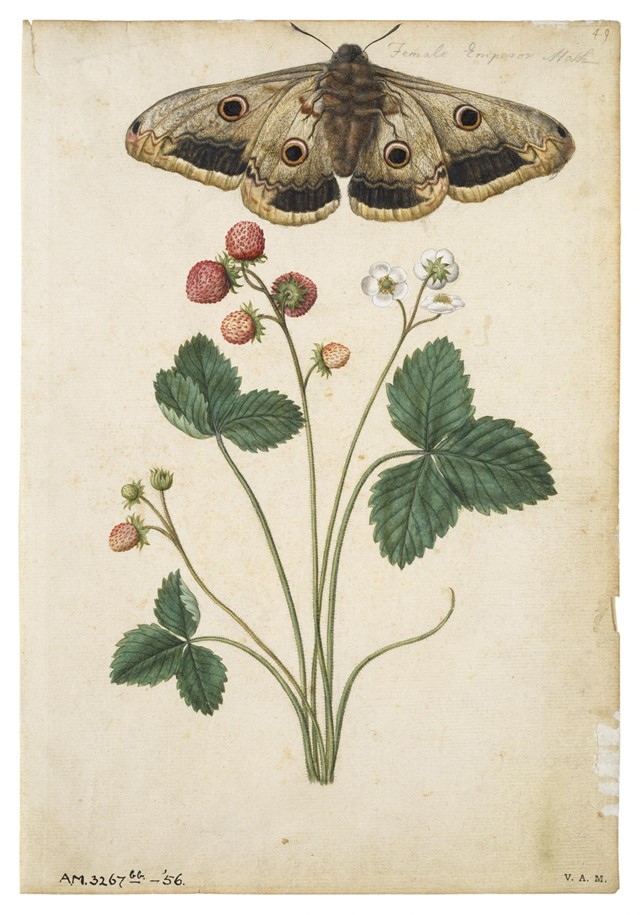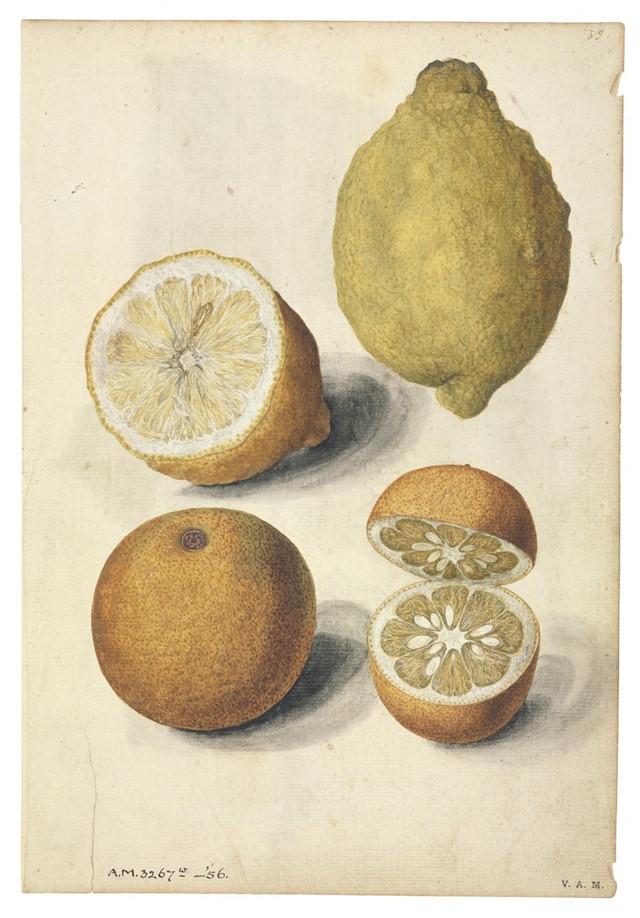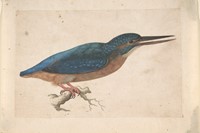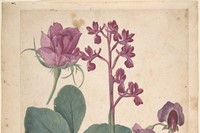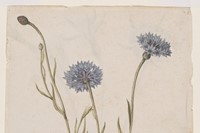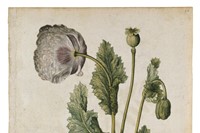As a new century-spanning exhibition sheds light on our ongoing fascination with the natural world, we celebrate one of early modern botanical art’s most brilliant pioneers
Who? In 1564, Huguenot artist Jacques Le Moyne de Morgue was enlisted by King Charles IX as the official artist and cartographer of a French expedition to Florida, spearheaded by renowned mariners Jean Ribault and René Goulaine de Laudonnière. The plan was to establish a colony there but after making enemies with the local tribes, facing internal revolt from disenchanted members of their own group and being attacked by a rival Spanish force, the much depleted party were forced to return home, mission unaccomplished. What was achieved, however, was an extraordinary series of detailed maps and exquisite drawings of the area’s native inhabitants, flora and fauna, courtesy of Le Moyne: the first European artist to visit the New World.
Interestingly, in spite of this, Le Moyne – who was forced to flee France following the Huguenot massacres and spent his later years as a successful botanical illustrator in England – was largely overlooked in the centuries that followed. It was only in 1922, when a librarian named Spencer Savage discovered that a book of plant-centric watercolours, purchased by the Victoria and Albert Museum in 1856 purely for its notable 16th-century French binding, was in fact by Le Moyne, that other works were correctly attributed to the artist and his profound legacy recognised.
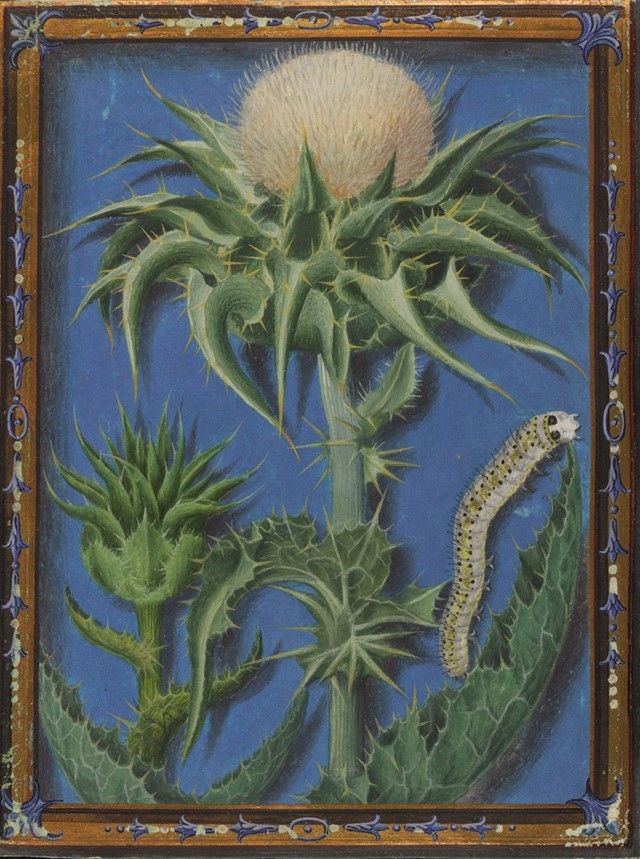
What? This week marks the opening of a new collaborative exhibition between Paul Kasmin Gallery in New York and Sotheby’s Old Masters Department, titled Naturalia, which will bring together a number of beautiful works from the 16th, 17th and 18th centuries and pair them with contemporary artworks similarly concerned with “the examination of natural science and its myriad presentations in art”. Artists Mat Collishaw, Mark Dion, Walton Ford, Damien Hirst and Sam Taylor-Johnson have all lent or specifically created pieces for the show, while the historical artists featured will range from 17th century Dutch painter Matthias Withoos to Albrecht Dürer.
It is also a chance to see two of Le Moyne’s spellbinding works on vellum, rendered in the painstakingly realistic style employed by French and Netherlandish painters at the time. The first depicts a characterful linnet (a small type of brown-grey finch) perched on a spray of vivid barberry against a rich gold backdrop. It highlights Le Morgue’s breathtaking ability to evoke not only the look but also the atmosphere of the natural world. As the Sotheby’s catalogue notes, “The abundant scarlet fruit and warm gold ground create a sense of intimacy while illuminating the bird, and the vibrant colors recall the linnet’s bright, cheerful song full of fast trills and twitters.” The second work is no less striking: a spectacularly blossoming green and gold thistle on a deep blue background, perfectly complemented by a bristly, speckled caterpillar.
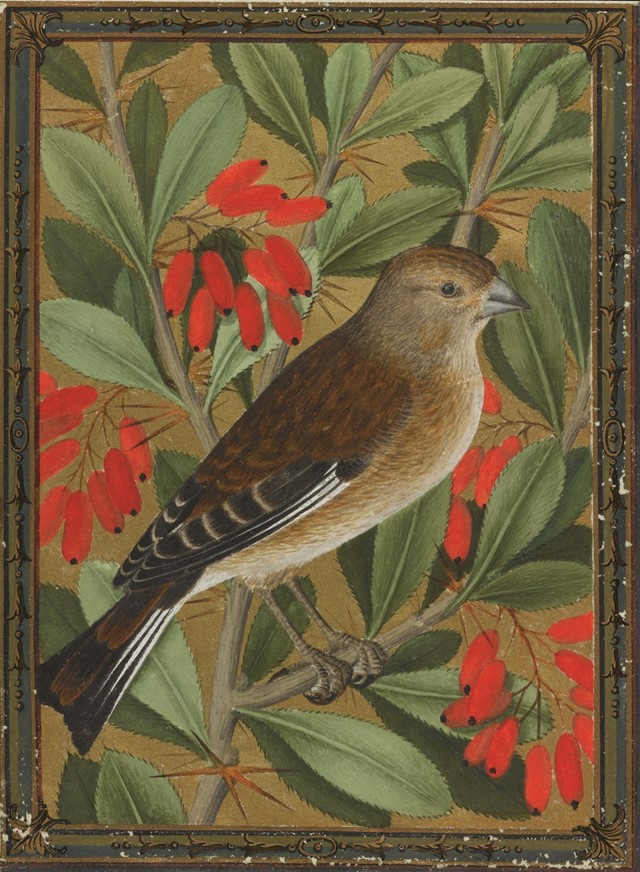
Why? Like all of the best botanical illustrators, Le Moyne’s incredible observational skills and precise drawing technique serve a dual purpose. As specialist David Pollack of Sotheby’s Master Paintings Department tells AnOther, “First, they are simply gorgeous to look at and because of this they have been cared for and collected with great passion for centuries. Second, through their realism they served as a tool for teaching both the general public and scholars of the natural world alike.”
This, he explains, ties into his wider ambitions for the exhibition: “My hope is that visitors will walk away with a deeper understanding and appreciation of how artists can wear multiple hats. Not only are they creators of beautiful objects, but they are also keen observers of the world around them, and, through their technical skills, record keepers of the natural specimens of the world. The show is a rare opportunity for a public audience to get a multi-century overview of how artists have observed the world around them and interpreted that world to serve their artistic needs.”
